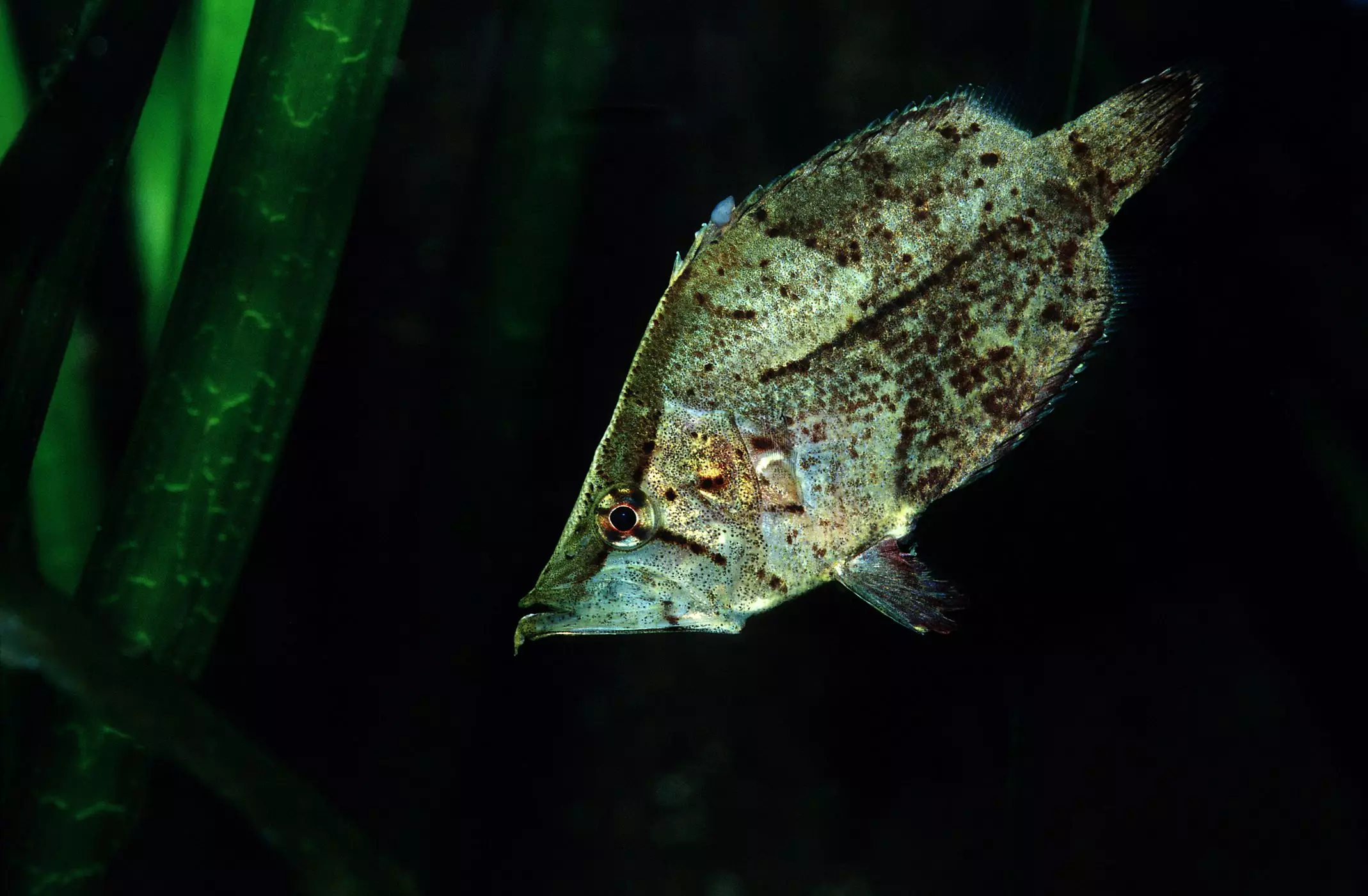The South American Leaffish, scientifically known as *Monocirrhus polyacanthus*, is a remarkable freshwater fish that captivates both aquarium enthusiasts and nature lovers alike. Known colloquially as the Amazon Leaffish, this compelling species is celebrated not just for its aesthetic appeal but also for its intriguing behavioral traits. With a talent for camouflage, the Leaffish mimics the appearance of a dead leaf, making it a stunning specimen that doubles as a fascinating study in evolutionary adaptation. However, keeping this fish in captivity is fraught with challenges, both in terms of its care and dietary requirements, making it suitable mainly for dedicated aquarists.
Natural Habitat and Adaptations
This exceptional species is native to the waterways of South America, primarily found in the Amazon River basin. The Leaffish thrives in shallow waters, where it cleverly conceals itself among aquatic vegetation, often positioning itself on the riverbed to await unsuspecting prey. Its body is designed for camouflage: flat, oval-shaped, and exhibiting a coloration that varies from yellow to brown with irregular markings that resemble the veins of a leaf. The unique physical characteristics, including spiny dorsal and anal fins, serve to enhance its leaf-like appearance—essentially rendering it undetectable against the natural backdrop of its habitat.
Distinctly, the Leaffish possesses the ability to modify its colors and patterns based on its surroundings, much like a chameleon. This skill is crucial for its survival as an ambush predator, allowing it to remain hidden while waiting for smaller fish to swim close enough for capture. Equipped with a disproportionately large mouth for its size, the Leaffish can eat prey that matches its mass. Consequently, within a community tank, this fish may wipe out smaller species in a matter of days. Hence, when considering its companions, larger, more resilient fish like Armored Catfish or medium-sized loricariids are recommended.
Creating the right environment for a South American Leaffish is pivotal to its wellbeing. Ideal conditions include soft water with low light intensity, replicating its natural habitat. Utilization of floating plants and driftwood offers hiding spots that make the fish feel more secure while maintaining a comfortable ambient light level. Filtration is crucial to ensure water quality, but aquarists must also aim for minimal water flow, acknowledging that excessive current can stress these sensitive fish.
In terms of diet, the Leaffish requires a steady intake of live food—ideally equal to its body weight each week. This necessitates either sourcing live guppies or catching local small fish in areas where it is legal and safe. If not adequately fed, the Leaffish can quickly decline in health.
The Leaffish exhibits fascinating behavioral traits, one being its peculiar swimming posture. Rather than swimming in the traditional manner, it often hangs head-downward, which not only adds to its disguise but also assists in stalking prey. This patient ambush strategy involves staying virtually motionless until a smaller fish ventures too close, at which point the Leaffish strikes with remarkable speed.
Breeding the South American Leaffish presents unique challenges, primarily due to the rarity of finding a ready mate. Nonetheless, when conditions are favorable, females will lay their eggs on broadleaf plants, and both parents will take an active role in protecting and fanning the eggs to ensure proper oxygenation. The care provided during this period is vital, as the eggs will hatch within a few days. Once hatched, the fry remain attached to their spawning site before transitioning to a free-swimming phase where they primarily consume microscopic organisms.
Enthusiasts are often drawn to the South American Leaffish not only for its aesthetic allure but also for the challenge it presents in terms of care and maintenance. Its exquisite camouflage and predatory behavior make it an extraordinary addition to specialized aquariums. Yet, prospective owners must weigh these considerations carefully. The Leaffish requires a dedicated and well-prepared aquarist with access to live food, attention to environmental conditions, and a keen understanding of its behavioral needs.
While the South American Leaffish might not be the easiest species to care for, it undoubtedly rewards those who take on the challenge with a thriving and dynamic focal point in their aquarium—one that often serves as a conversation starter and a testament to the beauty and complexity of freshwater life.

